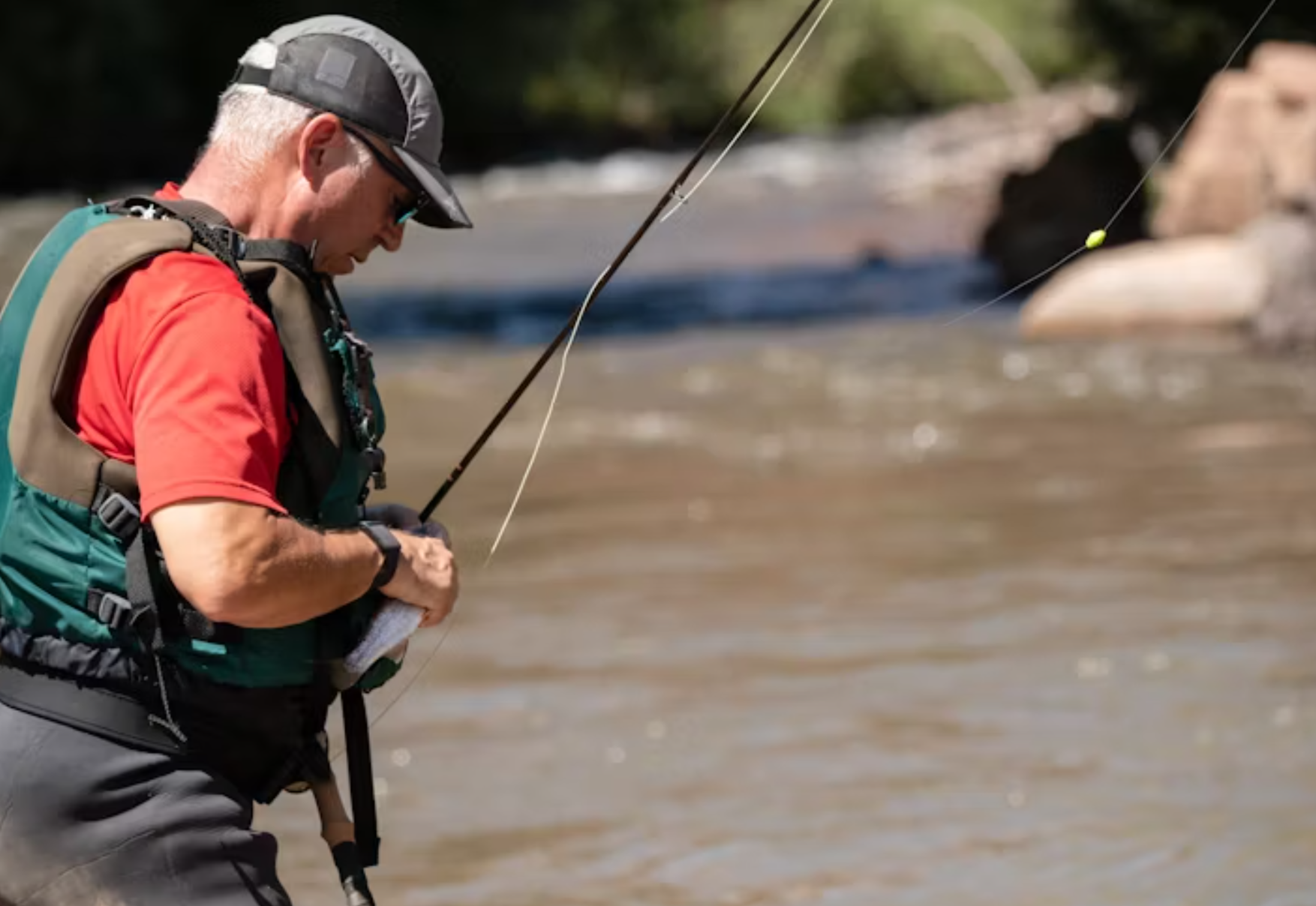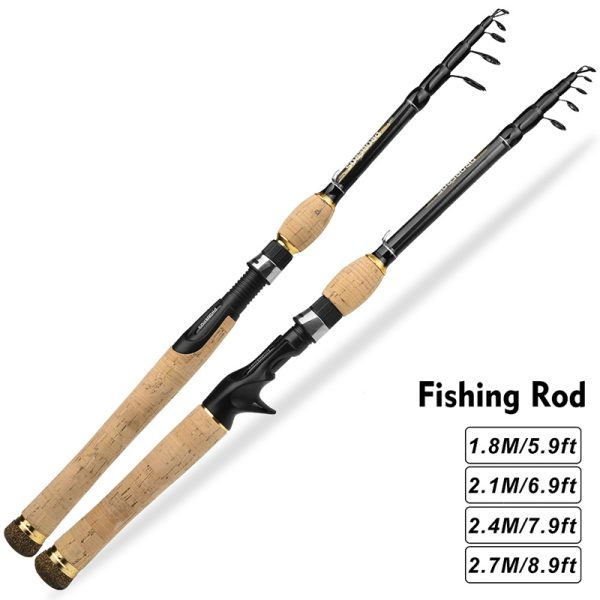Fishing rods face constant stress. For people who fish every week or even work with gear as part of their trade, the real question is how long a rod will stay strong. Daily pressure in tough places decides whether a rod becomes a long-term tool or breaks early. Durability shapes not just how you fish but also what you buy. Choosing rods that can stand up to rough conditions makes a big difference in both performance and costs. One supplier worth noting is Laike, a fishing tackle maker in China. With more than ten years of steady growth, this company has created a wide line of over 500 different products. Their rods, reels, and accessories go to more than 100 countries. The designs are not only drawn in a studio. They are tested in real spots—calm lakes, rocky rivers, and open coastal water—before going into large shipments.

What Factors Decide the Lifespan of a Fishing Rod under Professional Use?
Many things shape how long a rod lasts when used often. Each cast, each fight, and even the way the rod is stored builds up wear. A rod may look solid, but time and hard use reveal its weak points. The blend of materials, frequency of use, and care all decide whether it lasts many seasons or fails in one.
Material Composition and Build Quality
The heart of rod life is the material. Carbon fiber gives light weight and fine sensitivity. Fiberglass is heavier but tougher when knocked around. Many pros prefer rods with reinforced joints and strong guides, because those are the usual places where breaks appear. Quality of build is just as important as material. A cheap guide glued at the wrong angle can cut years off a rod’s working life.
Frequency and Style of Use
A rod used once a month in a quiet pond faces little stress. A rod used daily in long tournaments or offshore fights is a different story. Frequent use with strong hook sets, heavy lures, and hours of pulling big fish bends the blank again and again. Saltwater fishing adds extra stress since salt crystals eat into both metal and carbon if left uncleaned.
Maintenance and Storage Conditions
Basic care matters. Washing rods after saltwater trips, drying them before storing, and keeping them out of hot sun or damp rooms will add years to their life. Pros often check their rods weekly, looking for cracks or loose parts. Without care, a rod that might last five years can be ruined in one.
How Do Materials Like Carbon and Cork Influence Durability?
Materials are not just about feel and action. They decide how many years a rod can serve you before it gives out.
Carbon Fly Fishing Rod for Strength and Sensitivity
A Carbon Fly Fishing Rod is built to be strong but still light. That means long casting sessions without wearing out your arms. The carbon structure resists snapping, even with sudden shock from a hooked fish. Some designs have added strength at the joints, stopping weak spots from breaking. Because of this, carbon fly rods are trusted in both rivers and coastal waters where demands are high.

Cork Handle Fishing Rod for Comfort and Longevity
A Cork Handle Fishing Rod adds comfort and steady grip. Cork feels good in the hand, stays lighter than some synthetic handles, and does not get as slippery when wet. It can last for years with care, which is why many professionals still prefer cork. Long sessions with cork grips often cause less hand strain, which helps both the angler and the rod itself to stay in use longer.

Hybrid Options for Balanced Performance
Some rods mix carbon with fiberglass. This gives balance—light yet tough, sensitive yet affordable. These hybrid blanks are popular in markets where one rod must handle many fishing styles. They last longer than plain fiberglass and don’t reach the higher price of pure carbon rods, making them a middle-ground option for both pros and casual anglers.
How Does Professional Fishing Put Extra Stress on Rods?
Professional fishing means tougher conditions than weekend trips. Rods face repeated bending, strong fish, and the elements every day.
Continuous Casting and Retrieval Pressure
In tournaments, anglers may cast hundreds of times a day. Each cast bends the rod. Each retrieval with heavy lures pulls on guides and joints. That steady strain wears down even good blanks.
Handling of Large and Aggressive Species
Targeting fish like tuna, catfish, or tarpon puts rods under extreme pressure. Their strikes are hard, and their fights last long. Without strong power, the blank or the handle can give way.
Exposure to Harsh Outdoor Conditions
Saltwater, sand, and sunlight shorten rod life. UV light weakens resin in carbon blanks. Saltwater slowly corrodes guides and reel seats. Professionals who fish in hot coastal climates know this damage well.
How Can Proper Care Extend the Service Life of Fishing Rods?
Even the best rod can be ruined by poor care. Simple steps extend their working years and save money in the long run.
Cleaning and Drying After Every Trip
Rinsing rods with fresh water clears salt and dirt. Drying them fully before storage prevents mold or weak joints. These habits are small but add seasons to a rod’s life.
Correct Storage Practices in Different Seasons
Standing rods upright in a cool, dry room keeps them from warping. Covering them with sleeves during the off-season keeps dust and pests away. Professional fleets invest in racks for safe storage.
Regular Checks for Damage or Weak Spots
Small cracks, bent guides, or loose wrappings grow into bigger problems if ignored. Catching these early saves rods from sudden breaks during use. Many rods are lost not in battle with fish but because small issues were left unchecked.
How Should Buyers and Wholesalers Plan Purchases for Long-Term Reliability?
Durability matters not just to anglers but also to retailers. If rods break too soon, returns pile up and trust is lost.
Stocking Versatile and Durable Models
Medium power with medium-fast action fits many fishing needs. Stocking these alongside specialized models covers broad demand without filling warehouses with too many SKUs.
OEM and Customization Opportunities for Specific Markets
Wholesalers can stand out with custom wraps, different grips, or unique guides. Customization allows products to fit local markets while keeping core strength the same.
Balancing Cost, Quality, and Delivery Needs
Carrying both budget fiberglass and premium carbon rods satisfies different customers. Mixing cost with quality ensures steady sales and repeat business.
FAQ
Q1: How long can a carbon rod last with heavy use?
A: With regular care, carbon rods often last five to seven years even with tough use.
Q2: Does a cork handle really add to rod life?
A: Yes, cork grips remain strong for years and reduce strain on hands, keeping the rod in service longer.
Q3: What is the main difference between rods for casual vs. professional fishing?
A: Professional rods use stronger blanks, better guides, and reinforced joints for heavy daily use.




